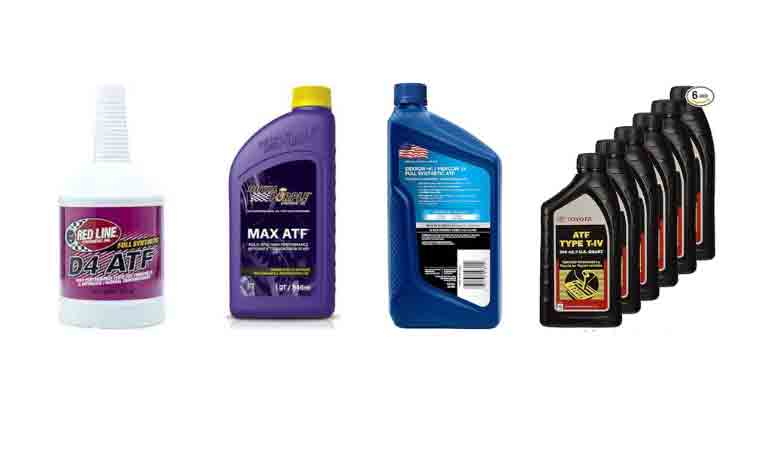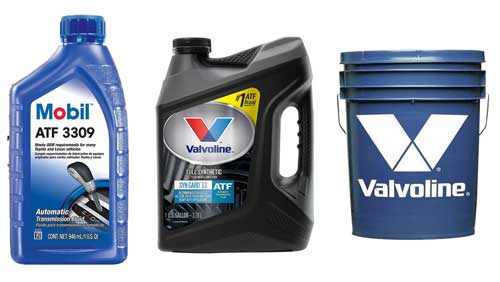Exploring the Best G12 Coolant Equivalent for Your Vehicle

Thinking about changing your G12 Coolant? I am here to help you choose the best G12 coolant equivalents for your next rides.
Pentosin Pentofrost is our first choice as a reliable G12 coolant equivalent that delivers exceptional performance.
This coolant boasts impressive corrosion protection and temperature stability, crucial for maintaining engine health.
Whether you’re driving a Volkswagen, Audi, BMW, or any vehicle, this coolant alternative offers peace of mind and efficient cooling system performance.
Ravenol HJC stands out as a top-tier G12 coolant equivalent with a balanced pH level that optimally safeguards engine components.
Its versatility extends to both aluminum and cast iron parts, making it suitable for a wide range of engines.
Engineered to prevent deposits and enhance heat transfer efficiency, Ravenol HJC ensures that your vehicle’s cooling system remains in peak condition.
This coolant alternative has gained a reputation for reliability and performance, offering protection against corrosion and overheating, regardless of the driving conditions.
If you’re seeking a G12 coolant equivalent that adheres to OEM specifications, Recochem OEM 86-314BOEMB is a standout choice.
This premium antifreeze concentrate not only meets G12 requirements but also provides extended protection against corrosion and overheating.
Its formula includes additives that combat cavitation and foam formation, ensuring optimal coolant performance.
With a focus on both protection and maintenance, Recochem OEM 86-314BOEMB is a dependable coolant option that caters to the needs of modern engines, enhancing their longevity and efficiency.
G12 coolant equivalent is a type of automotive coolant that meets the specifications set by the g12 standard.
It is designed to provide effective cooling and corrosion protection for modern vehicles.
Factors to Consider When Choosing G12 Coolant Equivalents
Choosing the right G12 coolant equivalent for your vehicle’s cooling system requires careful consideration of several factors:

Also Read: Dexron III Transmission Fluid Compatibility
Coolant Type Compatibility:
Ensure that the chosen coolant is compatible with your vehicle’s cooling system specifications.
Refer to your vehicle’s manual or consult a professional for guidance on the recommended coolant type.
Antifreeze Properties:
Verify that the coolant provides sufficient antifreeze protection, guarding against freezing in colder temperatures.
Consider your geographical location and select a coolant with the appropriate freeze point protection.
Corrosion Protection:
Option for a coolant that offers effective corrosion protection for all cooling system components, including metals and gaskets.
Longevity and Maintenance:
Assess the expected lifespan of the coolant. Some coolants are designed to last longer between changes, reducing maintenance frequency. This can offer convenience and potential cost savings over time.
Pre-Mixed vs. Concentrate:
Decide whether you prefer a pre-mixed coolant that is ready to use or a concentrate that requires dilution with distilled water.
Pre-mixed options offer convenience, while concentrates allow for customized dilution ratios.
Manufacturer Recommendations:
Adhere to the manufacturer’s recommendations for coolant selection. Using the specified coolant type can help maintain warranty coverage and prevent potential issues.
Flush and Compatibility Testing:
If switching coolant types, consider performing a thorough system flush to eliminate residual coolant and contaminants.
Additionally, conduct a compatibility test to ensure the new coolant mixes well with any existing coolant.
Also Read: Type A Transmission Fluid Equivalent
Step-by-step instructions for safely changing coolant

Locate Radiator Cap and Drain Plug:
Open the vehicle’s hood and locate the radiator cap. Be cautious, as the radiator can be hot.
Identify the radiator drain plug at the bottom of the radiator. You might need to raise the vehicle or remove a panel to access it.
Prepare Drain Pan:
Place the drain pan under the radiator drain plug to catch the old coolant.
Open Radiator Cap:
Carefully remove the radiator cap to release pressure. This will help the coolant drain more effectively.
Drain Coolant:
Use pliers or a wrench to loosen the radiator drain plug. Allow the old coolant to drain completely into the drain pan. Keep in mind that the coolant may still be hot.
Dispose of Old Coolant:
Transfer the old coolant from the drain pan to a suitable container for disposal. Make sure to follow local environmental regulations for proper disposal.
Flush the System (Optional):
If you’re changing coolant types or it’s recommended by your vehicle’s manufacturer, consider flushing the system with water to remove any remaining old coolant or debris. This step is essential when switching between incompatible coolant types.
Close the Drain Plug:
Tighten the radiator drain plug securely to prevent leaks.
Fill with New Coolant:
If using pre-mixed coolant, pour it directly into the radiator through the radiator cap opening.
If using concentrate, mix it with distilled water according to the manufacturer’s instructions, then pour the mixture into the radiator.
Also Read: Honda Gn4 Oil Equivalent
Tips for flushing the system properly before adding the new coolant
Safety Precautions:
Always prioritize safety. Allow the engine to cool completely before starting the flushing process to avoid burns.
Identify Drain Points:
Locate the drain points for the radiator and engine block. You might need to consult your manual or do some research to find these points.
Flush with Water:
Use distilled water to flush the cooling system. This helps remove any remaining coolant and debris. Pour water into the radiator and let it drain out through the drain points.
Repeat the Process:
Depending on the severity of contamination, you might need to repeat the flushing process multiple times until the draining water runs clear.
Use Flushing Agents:
Some vehicles might benefit from using a specialized flushing agent. Consult your manual or a professional to determine if this step is necessary.
Run Engine Briefly:
With the drain plugs closed, run the engine for a short time (following safety precautions) to circulate the distilled water through the system. This can help dislodge any remaining debris.
Drain Again:
Once the engine has cooled down, open the drain points again to allow the water to drain out.
Refill with Distilled Water:
Refill the cooling system with distilled water and run the engine briefly to circulate it. This helps rinse out any remaining contaminants.
Final Drain:
Drain the distilled water from the system one last time, ensuring that the draining water runs clear.
Add New Coolant:
After the system is thoroughly flushed, you can add the new coolant. If using concentrate, mix it with distilled water according to the manufacturer’s instructions before adding.
Bleed Air Bubbles:
Follow the instructions in your vehicle manual to properly bleed any air bubbles from the system after adding new coolant.
Read More About: Toyota Type T IV ATF Equivalent
Understanding G12 Coolant: The Ideal Engine Cooling Solution

G12 coolant is a highly efficient and effective engine cooling solution with exceptional properties and benefits.
It is essential to understand what g12 coolant is and why it is the ideal choice for maintaining proper engine temperature.
G12 coolant is a type of ethylene glycol-based coolant that offers superior heat transfer and corrosion protection.
Its unique composition prevents scaling and deposits, ensuring optimal engine performance.
This coolant is designed to be compatible with various engine types, including gasoline, diesel, and hybrid engines.
Its exceptional compatibility ensures that it can be used in a wide range of vehicles without any adverse effects.
Whether it’s a car, truck, or even heavy machinery, g12 coolant provides reliable engine cooling and safeguarding against overheating and potential damage.
With its outstanding properties and numerous benefits, g12 coolant is undoubtedly the go-to choice for engine cooling needs.
Also Read: Tes 389 Transmission Fluid Equivalent
How To Flush And Replace Your Engine Coolant
Step 1: Gather Materials and Tools
- New coolant (Check your vehicle’s manual for the recommended type and quantity)
- Distilled water (if needed for dilution)
- Drain pan
- Socket or wrench set
- Funnel
- Safety gloves and goggles
Step 2: Locate the Radiator and Drain Plug
- Open the hood and locate the radiator. It’s usually at the front of the engine bay.
- Locate the radiator drain plug at the bottom of the radiator. It might be a plastic wing nut or a standard bolt.
Step 3: Drain the Old Coolant
- Place the drain pan under the radiator drain plug to catch the old coolant.
- Loosen the drain plug. Be prepared for coolant to start flowing out.
- Once the coolant has drained completely, tighten the drain plug back in place.
Step 4: Flush the System
- Although it’s not strictly necessary, flushing the cooling system can help remove any built-up sediment and contaminants. You can do this by:
- Refilling the radiator with water.
- Running the engine with the heater on for a few minutes.
- Allowing the engine to cool down, then draining the water again.
Step 5: Refill with New Coolant
- Double-check your vehicle’s manual for the correct type and quantity of coolant.
- If your coolant needs to be mixed with water, use distilled water to avoid mineral buildup.
- Use a funnel to pour the new coolant into the radiator until it’s nearly full.
- Start the engine with the radiator cap still off and let it run. This will help any air bubbles escape from the system.
- Slowly add more coolant as needed while the engine runs. Keep an eye on the coolant level.
Step 6: Bleed the Air
- Turn on the heater to the highest temperature setting and the blower to the highest setting. This helps circulate coolant through the heater core.
- Gently squeeze the upper radiator hose to help release air pockets.
- Keep adding coolant until the level stabilizes, and there are no more air bubbles escaping.
Step 7: Secure the Radiator Cap
- Turn off the engine and let it cool down.
- Once the engine is cool, secure the radiator cap back in place.
Step 8: Check for Leaks
- Start the engine and let it run for a while. Keep an eye out for any coolant leaks under the vehicle.
Step 9: Dispose of Old Coolant Properly
- Old coolant is toxic and should be disposed of according to local regulations. Many auto parts stores have coolant recycling programs.
Frequently Asked Questions Of G12 Coolant Equivalent
1. What does G12 mean on coolant?
G12 is a coolant specification developed by Volkswagen Group (VW), known as VW G12 coolant or G12++ coolant. It’s an antifreeze with organic acid additive technology for corrosion protection.
2. What Is G12 Coolant?
G12 coolant, also known as g12++ or g13, is an ethylene glycol-based engine coolant used in modern volkswagen and audi vehicles.
It provides excellent protection against corrosion, cavitation, and freezing to ensure optimal engine performance and longevity.
3. Can I use water instead of G12 coolant?
Water lacks antifreeze and corrosion protection properties, so using proper coolant like G12 is recommended for optimal cooling system function.
4. Is G12 coolant universal?
G12 is designed for VW vehicles but similar coolants with organic acid technology (OAT) exist. Check compatibility and follow manufacturer guidelines.
5. What color is G12 coolant?
G12 coolant is typically pink or reddish, helping distinguish it from other coolant types.
6. What color is VW G12 coolant?
VW G12 coolant is usually pink or reddish, specific to Volkswagen vehicles. Always verify recommended coolant types.
7. Is G12 Coolant Compatible With Other Coolants?
No, g12 coolant should not be mixed with other coolant types. It is specifically formulated for use in Volkswagen and Audi vehicles and mixing it with other coolants can result in reduced performance and potential damage to the cooling system.
8. How Often Should G12 Coolant Be Replaced?
G12 coolant typically has a service life of about 5 years or 150,000 miles, whichever comes first.
It is important to follow the manufacturer’s recommendations for coolant replacement to ensure proper engine cooling and prevent any potential issues.
9. Can G12 Coolant Be Used In Older Vehicles?
G12 coolant is designed for use in modern Volkswagen and Audi vehicles, and it may not be compatible with older models.
It is recommended to consult the vehicle’s owner’s manual or a trusted mechanic to determine the appropriate coolant for older vehicles.
Conclusion
In conclusion, selecting the right G12 coolant equivalent for your vehicle is crucial for maintaining its cooling system’s efficiency and longevity.
In this article, we’ve explored some excellent options that offer reliable performance and protection.
When considering a coolant change, factors such as compatibility, antifreeze properties, corrosion protection, and manufacturer recommendations should guide your decision.







